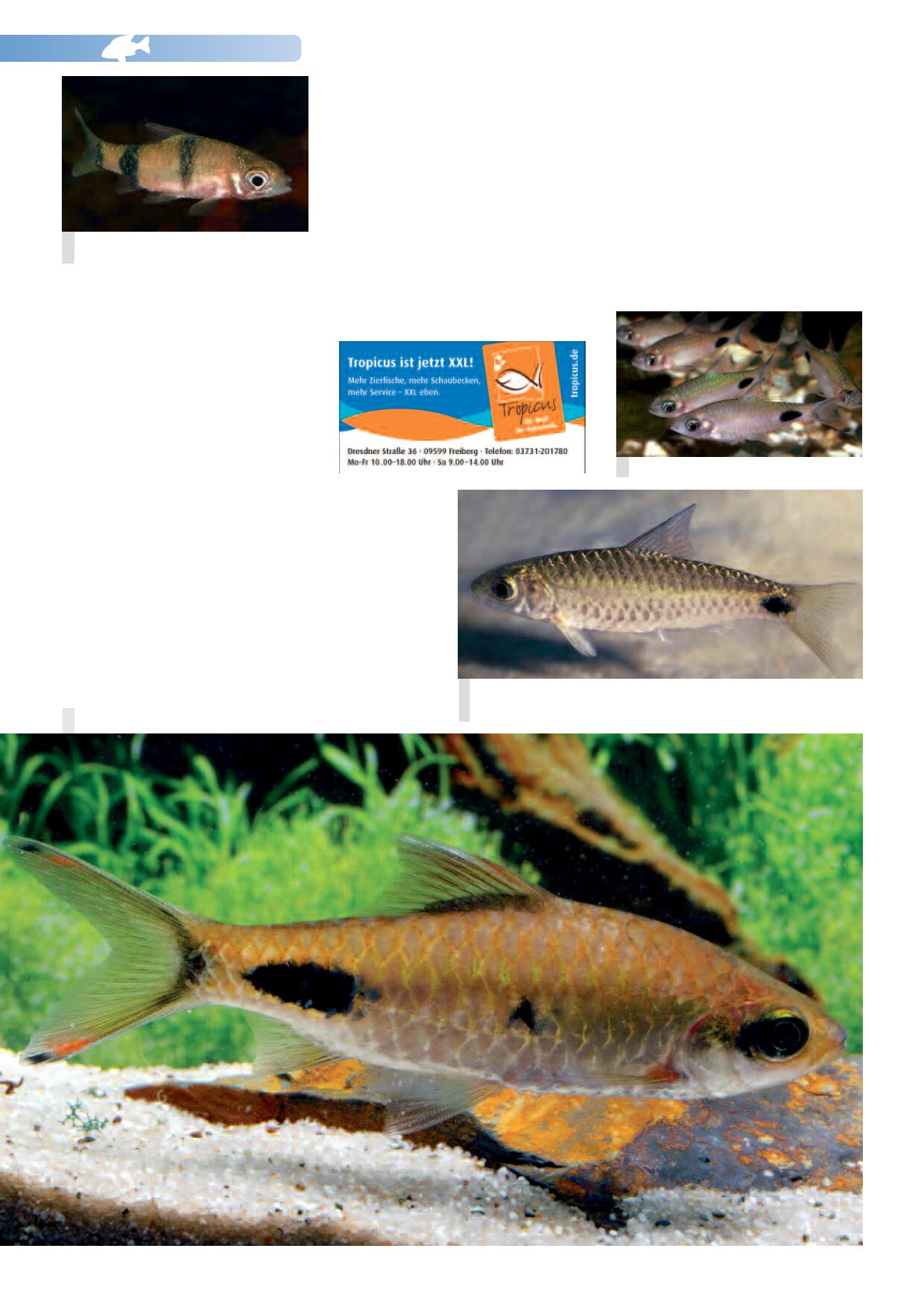
NEWS106
8
Juvenilesof all Indianbarbsare striped.The
photo shows
Dawkinsiasinghala
.
Thisnewly imported species isvery similar to
Dawkinsiaexclamatio
.
33andpicturedonpage34 (top).Unfortu-
nately an error has crept into the caption,
as it isnot theMaskaraBarb,a formwhose
status remainsunclear.
Somuch for theupdateon thesystematics
of these lovely fishes.
AquariumGlaserhas recentlybeenable to
importanumberof Indianbarbs thatwere
listedby the exporter asDawkinsia excla-
matio. When I inspected them to check
their identity I noticed two things:
1 -Theconsignmentconsistedofamixture
of two species that were very similar in
color but clearly different anatomically.
Oneof the speciesmatched
D.assimilis
in-
This is
Barbusmahecola
,anunremarkable fish that is asgoodasnevermaintai-
ned in the aquarium. It doesn’t belong to the Indianbarbs, and its inclusion in
thegroup restsonamisidentificationdating from1878!
Agroupofhalf-grown
D.filamentosa
.
mostof itscharacters,theother
D.exclama-
tio
.
2 – Althoughmany specimens of both (!)
specieshadhintsof the lateral spot socha-
racteristic of
D. exclamatio
, itwas also ab-
sent in some individualsofboth species.
Itwould thus appear that the Indianbarbs
stillhaveall sortsof surprises instore forus.
Manypopulationsare ratherdifferent in the
pict four specimens that they describe as
naturalhybridsbetween
Dawkinsiatambra-
parniei
and
D. filamentosa
, as they were
found syntopic with those two species.
Could it be that there is ahybrid swarmof
Dawkinsia
species in southern India?
Questionuponquestion,andaquaristsmay
have a major part to play in answering
detailsof theirco-
lorationand it ap-
pears that there is
a mimesis bet-
ween
D. assimilis
and other
Daw-
kinsia
species.
Knight et al. de-


